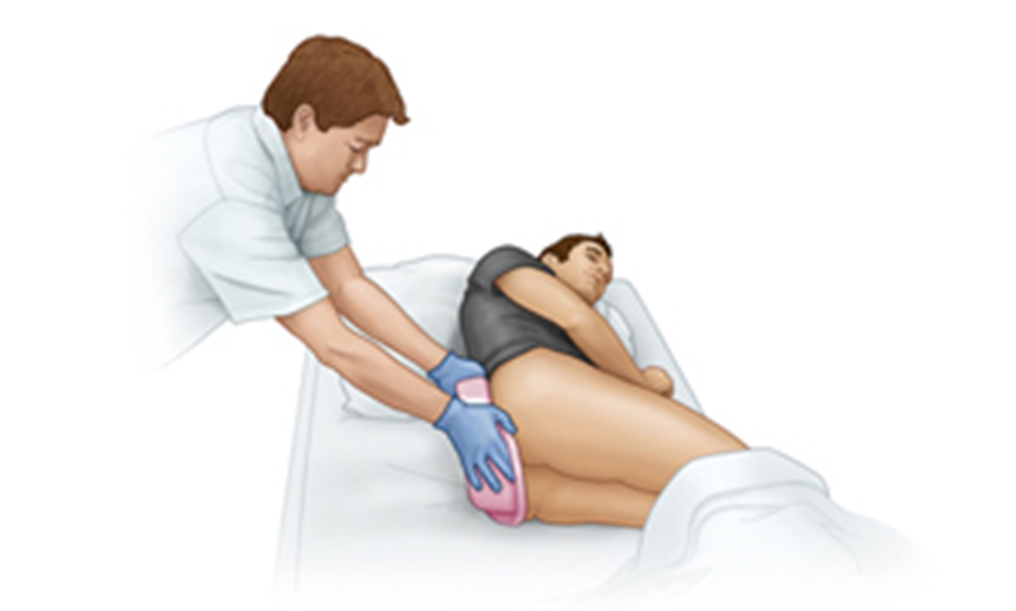The nurse is entering prescriptions for lab work in a client's electronic medical record (EMR) when the system locks up and does not restart. Which action should the nurse take first?
Print electronic medical record (EMR) from backup server.
Notify information services department of the situation.
Identify information as late entry in the record.
Wait for notification that the system has been rebooted.
The Correct Answer is B
Choice A reason: Printing electronic medical record (EMR) from backup server is not the best action to take first. It may not be possible or feasible to access the backup server if the system is down. It may also delay the communication and delivery of the prescriptions to the lab.
Choice B reason: Notifying information services department of the situation is the best action to take first. It alerts the experts who can troubleshoot and fix the problem as soon as possible. It also allows the nurse to obtain guidance on how to proceed with the documentation and prescriptions.
Choice C reason: Identifying information as late entry in the record is a relevant action to take, but not the first one. It ensures the accuracy and completeness of the EMR, but it does not address the immediate issue of the system failure. The nurse may not be able to enter the information until the system is restored.
Choice D reason: Waiting for notification that the system has been rebooted is not a proactive action to take first. It may waste valuable time and compromise the client's care. The nurse should not assume that the system will be rebooted automatically or quickly.
Nursing Test Bank
Naxlex Comprehensive Predictor Exams
Related Questions
Correct Answer is D
Explanation
Choice A reason: Reviewing the chart for number of voids over the last 24 hours is not the best action to evaluate the client for urinary retention. It may provide some information about the client's urinary pattern, but it does not indicate the amount of urine left in the bladder after voiding.
Choice B reason: Palpating the suprapubic region for distention is a useful action to assess the client for urinary retention, but it is not the most accurate or reliable method. It may be difficult to palpate the bladder if the client is obese, has abdominal pain, or has bowel distention.
Choice C reason: Evaluating the client for urinary incontinence is not relevant to the assessment of urinary retention. Urinary incontinence is the involuntary loss of urine, while urinary retention is the inability to empty the bladder completely.
Choice D reason: Scanning the client's bladder after voiding is the best action to evaluate the client for urinary retention. It is a noninvasive and precise technique that measures the post-void residual urine volume. A normal post-void residual is less than 50 mL, while a high post-void residual indicates urinary retention.

Correct Answer is B
Explanation
Choice A reason: Applying lubricant to the cannula tubing is not the best intervention as it may cause irritation or infection of the nasal mucosa. The nurse should use water-soluble gel or saline spray to moisten the nasal passages if needed.
Choice B reason: Placing padding around the cannula tubing is the best intervention as it prevents friction and pressure on the skin. The nurse should use soft materials such as gauze or foam to cushion the tubing and check the skin integrity frequently.
Choice C reason: Decreasing the flow rate to 1 L/minute is not an appropriate intervention as it may compromise the client's oxygenation. The nurse should maintain the prescribed flow rate and monitor the client's vital signs and oxygen saturation.
Choice D reason: Discontinuing the use of the nasal cannula is not an option as it may endanger the client's life. The nurse should continue the oxygen therapy as ordered and provide comfort measures and education to the client.
Whether you are a student looking to ace your exams or a practicing nurse seeking to enhance your expertise , our nursing education contents will empower you with the confidence and competence to make a difference in the lives of patients and become a respected leader in the healthcare field.
Visit Naxlex, invest in your future and unlock endless possibilities with our unparalleled nursing education contents today
Report Wrong Answer on the Current Question
Do you disagree with the answer? If yes, what is your expected answer? Explain.
Kindly be descriptive with the issue you are facing.
